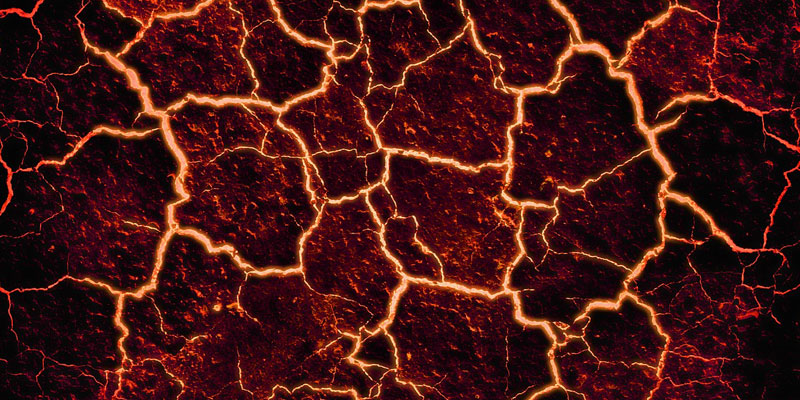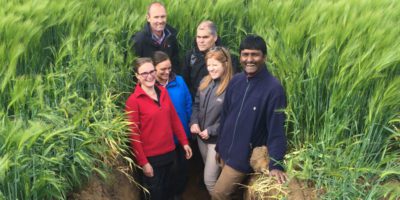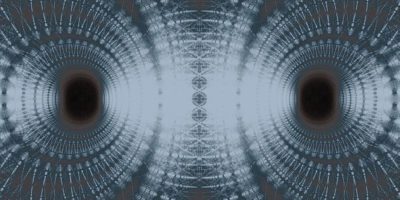Dr. Carina Fearnley is a lecturer in Environmental Hazards, based at Aberystwyth University, and she has a background in geology and mining, having studied for her B.Sc. and M.Sc. [Bachelor of Science and Master of Science] at Imperial College London. Her recent research is interdisciplinary, bringing together hazard science, disaster management, and science and technology studies to better understand natural hazard early warning systems. Her Ph.D. research at the UCL Hazard Research Centre at University College London specifically reviewed the implications of standardising volcano alert level systems within the USA, along with the way scientists act in the context of risk, uncertainty and complexity.
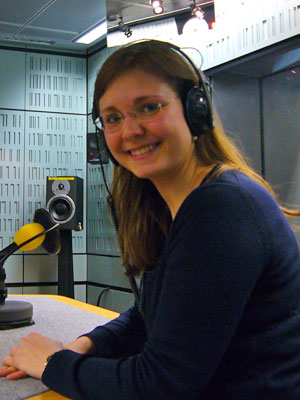
Carina spoke at the Bristol Soapbox Science event, which took place on Sunday 7th June 2015. The title of her talk was: “What natural disasters will we face in the future? Learning from dinosaurs, ancient civilisations, and rocks!”
From analysing credit risk to analysing risk of natural disasters
In 2004 I was working as a Credit Risk Analyst for a large investment bank when I first heard about the Andaman-Sumatra Earthquake and Tsunami, otherwise known as the ‘Boxing Day tsunami’. I could not help but be surprised as to why so many people had died from this tragedy.
Communication rather than science
My geology degree had taught me that we can detect earthquakes, and that tsunami detection was getting better as exemplified by the success of the Pacific Tsunami Warning Center. I realised that it all came down to communication rather than the science; there was no early warning system in place and no way to communicate across the many countries involved in this international disaster.
Besides how could you communicate to the many locals and tourists in vulnerable areas who may not be aware of what a tsunami is, let alone the warning signs of an impending tsunami? This event changed the lives of many, in a devastating way, and for me, I wanted to know why this event happened, and how it could be prevented in the future. So I left my rather well paid job to take up a Ph.D [Doctor of Philosophy] to seek answers.
Volcano early warning systems helping with other natural hazards
After securing an interdisciplinary scholarship from Natural Environment, and Economic and Social Research Councils, my Ph.D. thesis titled ‘Standardising the United States Geological Survey volcano alert level system: acting in the context of risk, uncertainty and complexity’ was the first extensive research project looking at Volcano Alert Level Systems, a key component of volcano early warning systems.
Volcanoes are particularly interesting, as they produce multiple hazards (from lava flows, to ash, to pyroclastic flows, to climate change) over varying temporal and spatial scales, making them some of the most complex natural phenomenon to provide warnings for. I felt if I could crack volcano early warning systems, then it would help with other natural hazards too.
Still don’t have all the answers, but lots of new questions
Ten years later, I still do not have all the answers as warning systems are inherently complex, bridging the physical and social sciences, the environmental and human divide. But I do have lots of new questions and am demonstrating the importance of holistic approaches to early warning systems, doubting the ability for standardised warning systems to work effectively over great scales, and highlighting the need for both policy and grass-routes approaches to make sure people can reduce their vulnerability to natural hazards.
Lectureship in Environmental Hazards
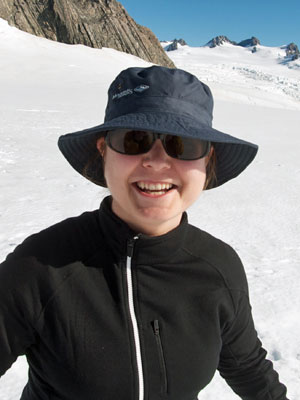
Specifically this research focuses on the need to reconceptualise natural hazard early warning systems by using interdisciplinary approaches to develop a better understanding of the physical and social sciences involved. Recently, my research interests have broadened to the application and analysis of science and art collaborations for natural hazards, including a project titled ‘The Other Volcano’ with the designer Nelly Ben Hayoun.
Teaching using new methods and technologies
Second, is the role of teaching, the bread and butter of the university world so to speak. I teach undergraduates and postgraduates in classes ranging from five to several hundred, and thoroughly enjoy my modules in Geohazards and Volcanic Hazards in particular. As part of my teaching I have been interested in integrating new innovative teaching methods and technologies to help students prepare for the complex problems society faces.
Third, academics are not exempt from admin, but this can include anything from recruitment, to departmental newsletters, to being a member of the Athena SWAN committee – a team dedicated to encouraging equality and diversity in the workplace, particularly to increase the numbers of women in STEMM [science / technology / engineering / maths / medicine].
Where are all the female professors?
There is a distinct shortage of women in science, and although 45% of the UK’s 194,245 academic staff are women, only 22% of professors are female according to a report titled Staff in Higher Education 2013-14 (by the Higher Education Statistics Agency).
This is due to a number of reasons: from not engaging with girls at a young age and making science exciting and something that every child should do, right through to choosing to study science at school and university, alongside the challenges of getting women employed at university, and then keeping them beyond the first few years!
This was recently explored at an event I co-organised with some colleagues at Aberystwyth University (see Dr. Hannah Dee’s blog for the videos and overview).
Being a scientist and an academic is incredibly challenging role, juggling teaching (lecture prep and marking), administrative roles, research (writing papers, presenting findings, editing and writing books etc.), right through to generating income for research.
Reasons women fall out of academia
It is tough job, albeit hugely rewarding, and many women fall out of academia at this point as it is hard to get jobs, and often with partners already working, it often means a long distance relationship. Even less women make it up through the university ranks to Professor. One of the key things we can do to change this awful trend is to create more role models, to create more opportunities for all of society to see female scientists, and see the wonderful work they are doing.
It is cool to be a female scientist
The Soapbox event provides that opportunity, to inspire young girls, and to say, you know what, it is cool to be a female scientist, and it is a great career – a girl’s childhood does not have to be all about ‘pink and princesses’ (see the Pink Stinks campaign). We need to inspire, help motive young ladies, and provide role models to show it can be done, and provide a supportive environment to do this.
Soapbox helps us get this message out; we are missing out on 50% of a population that has much to offer in terms of creative and engaging thinking, it is our loss as a society, and therefore it its something that needs addressing.
Soapbox Science – an opportunity to excite and engage. It’s never too late to learn!
Soapbox provides an opportunity to excite and engage with anyone no matter what age, or where you are from! I am a huge fan of communicating knowledge, no matter what type. I think it is so important that we communicate with one another, share our knowledge, experiences, and interests, no matter what. It is important that we share our passion and interests with others, it is never too late to learn.
For the Soapbox event, I will prepare a few stories that take the audience through major volcanic events, using these to explain some of the key science, the successes and failures of society to live with volcanoes, and why it is important and relevant to us all. I tend to like mapping things out on paper using mind maps, and then will develop a stock of material, and possibly a few props!
I mostly rely on my enthusiasm to get me through most things and I believe telling stories are the best way to engage an audience. The key is to create a platform where people want to, and feel happy to, ask questions. I am a strong believer that there is no such things as a silly or stupid question, and I work hard to make sure when I talk to any audience, that it is inclusive and friendly. Learning should be fun, safe, and exciting. If I were to sum up three words what I hope my session will be, it is ‘fun, excitement, spontaneous’!
Changing sectors – a different perspective
So you may be wondering if my time spent working in the financial sector of the London city was of use? Absolutely! Working in business provides a different perspective to any employment. It drums home the importance of time management, ambition, and also seeing the importance and relevance in any work.
Managing and modeling risk
In terms of my field, investment banking is all about managing risk, modeling it, and making sure procedures are in place to mitigate against risks to the business, so my previous job simply provides another perspective to the issue of risk management and communication.
On top of this, in the field of disaster risk reduction, insurance companies have a significant interest to mitigate financial losses due to natural hazards, particularly in developed countries.
Insurance companies invest heavily in developing models so they can forecast natural disasters and the losses that may result, but my research has shown that if the insurance sector aims to develop more robust insurance models, there is a need to further understand the behaviour of key decision makers in a natural hazard crisis, and to help facilitate best practices predicated on a deliberative and holistic approach to reducing risk in the face of uncertain hazards.
More interdisciplinary researcher sharing expertise needed, and more women!
With so many complex interrelating problems we face, we need to make sure there are more interdisciplinary researchers sharing expertise, knowledge, and communicating to one another, and that has to include more women!
http://www.carinafearnley.co.uk
https://twitter.com/carinafearnley
https://uk.linkedin.com/pub/carina-fearnley/1/2a8/7b7

